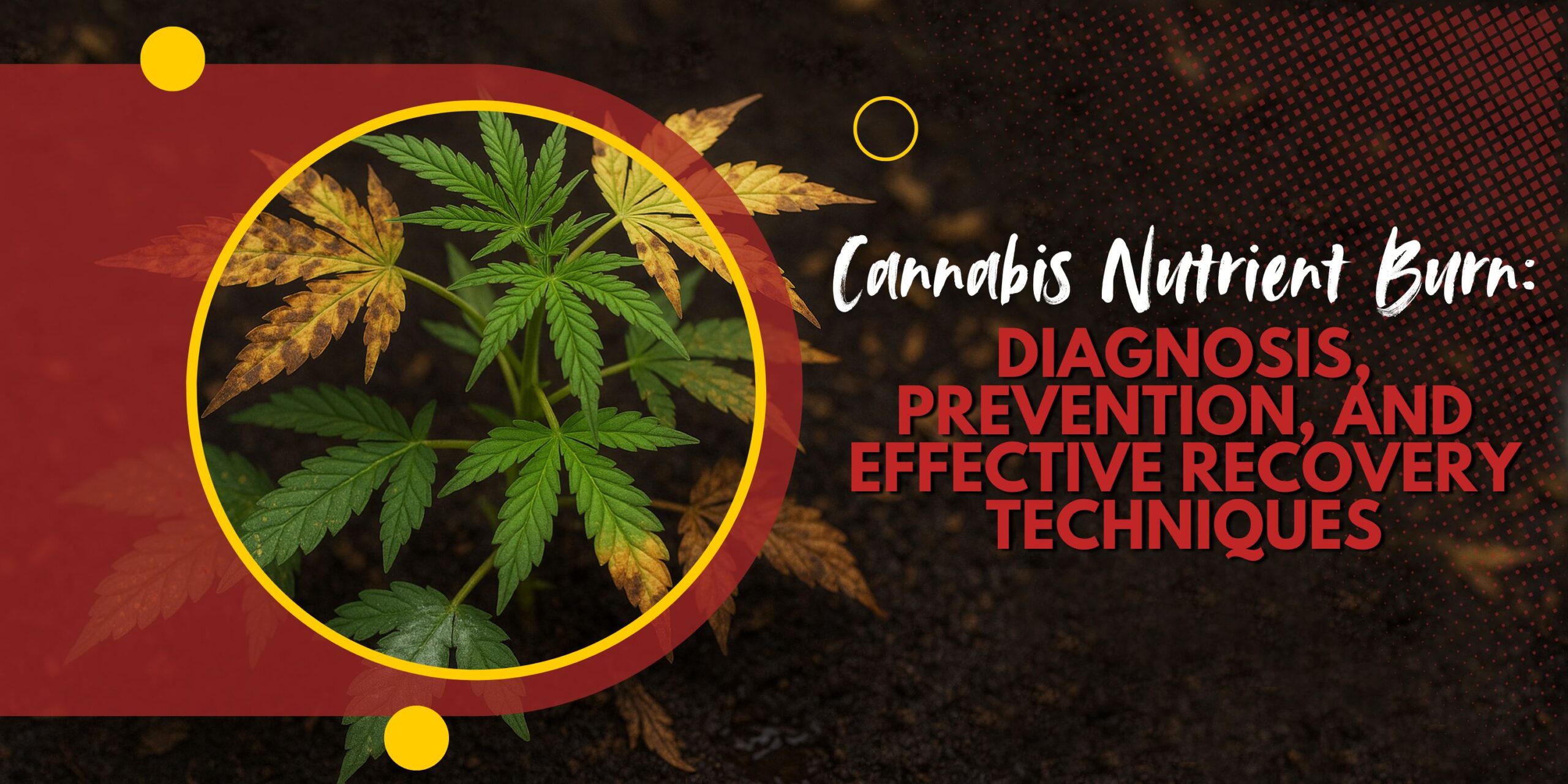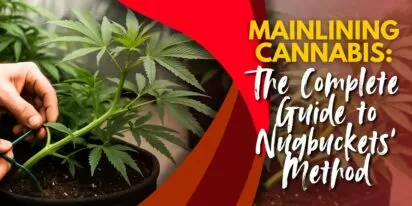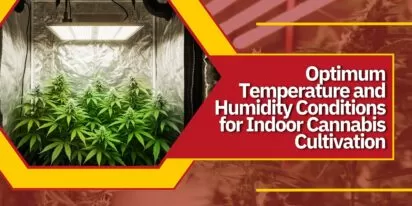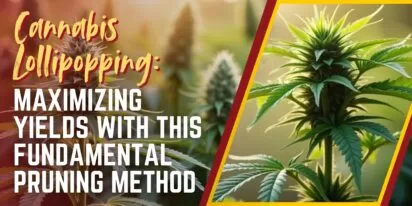Whether they are using hydroponics or soil, nutrient burn is a regular and major issue for cannabis growers. It results from too many nutrients—that is, from too high levels of nitrogen, phosphorous, or potassium in cannabis plants. In severe situations, nutrient burn can even result in death; it can also cause extensive damage to plants by suppressing growth and hence affect harvests. Thus, one should grasp nutritional burn in-depth and use appropriate preventive and corrective actions. This post will discuss how to treat nutrient burn, prevent it, and identify it.
What is Cannabis’s Nutrient Burn?
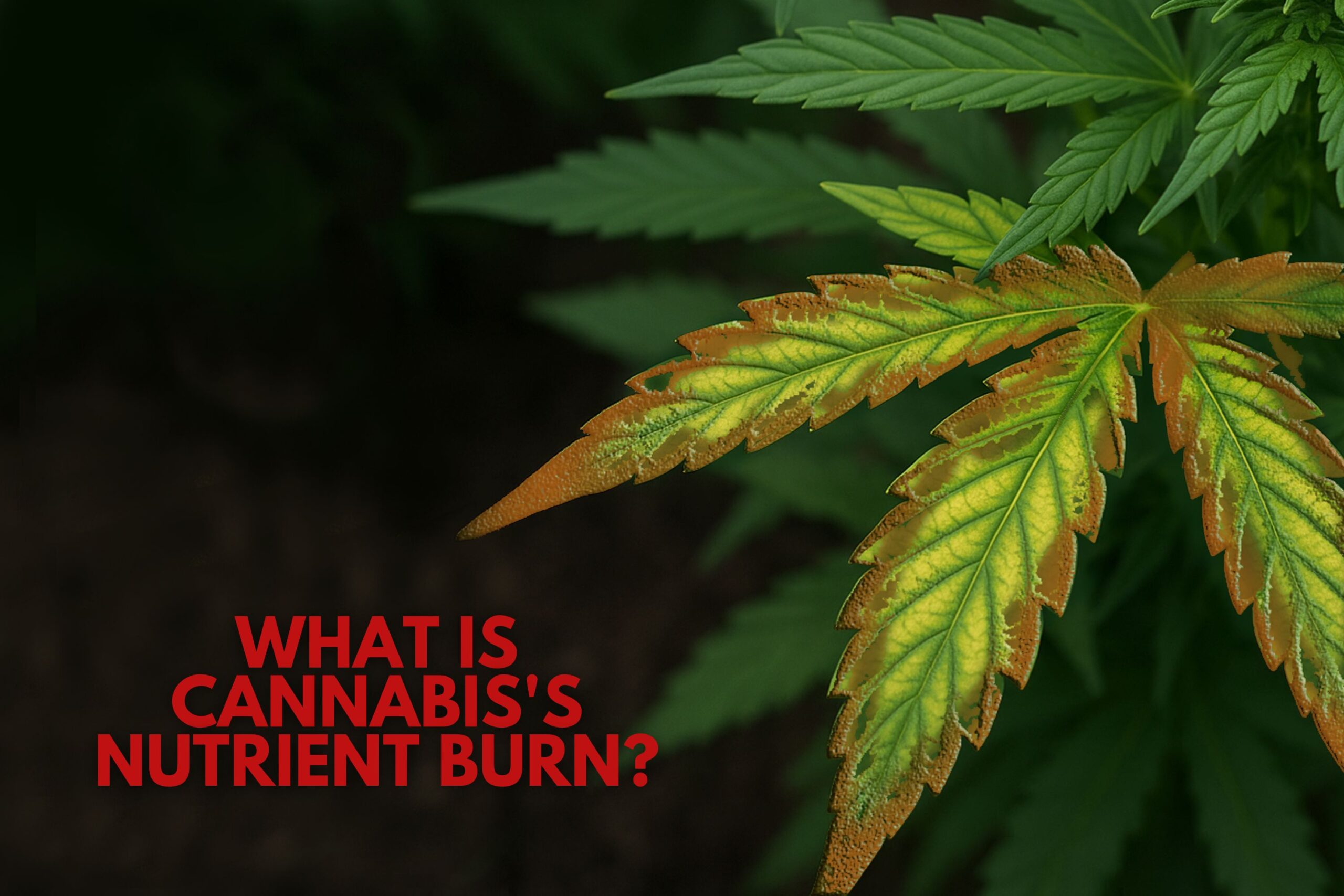
When cannabis plants get too many nutrients, a condition known as nutrient burn results from mineral and salt buildup in the root zone and leaf tissues. The extra nutrients that the roots take disrupt the plant’s natural water balance and lead to dehydration and toxicity when they exceed what the plant can use. Although all cannabis plants need nutrients to flourish, an excess of them overwhelms the plant’s capacity to break down them, resulting in a cascade of problems seriously compromising plant health.
Usually commencing at the tips and the margins, nutrient burn shows obvious damage to leaves. A worsening problem might lead to yellowing, curling, and leaf necrosis. Early on, these symptoms would only show up on older leaves toward the bottom of the plant, but as nutritional imbalances linger they could spread over the plant. Although cannabis plants have a When nutrient levels exceed the plant’s tolerance for nutritional stress, the damage is permanent, affecting photosynthesis, growth, and yields. Severe occurrences of nutrient burn will either stop or slow down flowering, therefore diminishing the cannabis’s general potency and quality.
Visual Indices of Cannabis Plant Nutrient Burn
Managing the damage depends on early diagnosis of nutritional burn. Usually starting modest and getting more severe if not treated, the symptoms follow a regular path.
- Leaf tip burn is the yellowing or browning of the leaf tips. The older, lower fan leaves most clearly show the condition.
- Marginal Chlorosis and Necrosis: The leaf margin turns discoloured, gets brittle, and curls upward as the problem gets going. Desiccation brought on by salt buildup causes this necrosis.
- Excessive nitrogen will cause leaves to get excessively dark green and glossy before tip burn.
- Burn from too great damage impairs root health, therefore reducing the effectiveness of nutrient absorption and limiting vegetative and blooming development.
- High EC or PPM meter readings from runoff water indicate fertilizer over-saturation in the growing medium.
Early on identification of these indicators lets producers intervene before any irreversible damage occurs.
Causes of Nutrient Burn in Cannabis Grow
The first step toward prevention is knowing the reasons for nutritional burn. The following list includes the most likely culprits:
- Overfeeding: The most blatant offender. Feeding plans that run counter to plant size, phase, or strain sensitivity will shock the roots.
- Inadequate flushing, salt fertilizers, and inadequate drainage produce nutrient residue build-up with time.
- Feeding with nutrient solutions with higher EC values than a plant’s tolerance limit induces osmotic imbalance and leaf dryness.
- Nutrient absorption relies on pH. Nutrient lockup brought on by pH imbalance drives growers to overfeed and unintentionally burn the plants.
- Highly concentrated synthetic fertilizers are especially dangerous unless adequately diluted or used incorrectly in frequency.
Preventing Nutrient Burn in Cannabis
Once nutritional burn on cannabis sets in, trying to treat it is significantly more difficult and less successful than prevention. Following these simple best practices will help growers greatly lower the risk of overfeeding and nutrient toxicity, thereby promoting good development and the highest yields.
Start with lesser nutrient values
Starting tiny dosages of nutrients—especially in the early stages of development—is the secret to avoiding nutritional burn. Since cannabis seedlings are fragile, overfeeding can rapidly cause nutritional poisoning. Start with a dosage of 25–50% of the manufacturer’s advised nutrient dosage and raise the dosage as the plant ages. This will let the plants settle into the feeding schedule without stressing them.
Monitoring pH and EC Regularly
Regularly monitoring the pH and electrical conductivity (EC) of the nutrient solution helps prevent nutrient burn on weed. While the EC result approximates the nutrient concentration in the growth media, the pH of the solution directly affects nutrient absorption. Regular testing assures that the nutrient solution falls within the ideal range for plant health.
Purging the Medium to Prevent Salt Build-up
Flushing the grow media helps one of the best preventative measures against nutrient burn. Over time, especially in hydroponics, salts will eventually gather in the growing media; hence, regular flushing with pH-balanced water is a desirable habit. This will eliminate any extra salts and balance the medium, therefore lowering the toxicity risk. Every two to four weeks flushing will maintain the root zone in a healthy balance of nutrients.
Tailored Diet Based on Plant Need
Every strain of cannabis requires different nutrients, hence the feeding plan should be adjusted according to this need. Some strains may handle with little feeding while others are heavy Feeders require regular nutrition administration. Matching the feeding schedule to the cycles of growth of your plants will help to avoid nutrient burn and encourage good development. To maximize your approach going forward, keep thorough notes of how your strains react to various nutrient levels.
Solving Nutrient Burn in Cannabis Plants
1. Using pH-balanced water, flush the medium
Severing the nutrient supply by flushing the developing medium with straight, pH-balanced water comes first in correcting nutrient burn. This helps eliminate nutrients and leftover salts driving the burn. To flush out the medium, you should use 2–3 times the water volume depending on the pot size. After flushing, ensure that the levels have reduced to a safe zone before checking the runoff EC or PPM.
Water with a steady pH is crucial since any pH change could aggravate nutrient lockout. Growing in hydroponics, make sure the water temperature falls between 18 and 22°C (64 and 72°F) to prevent stunning the plants with cold water.
2. Cut the affected leaves
Cutting off the worst of the damaged leaves after flushing helps to guarantee improved air circulation and reduce plant stress by so minimizing the damage. This will also help the plant to concentrate its energies on fresh development instead of trying to conserve dead or dying leaves. Prune gently; trim just the damaged sections; leave good growth unaltered.
Eliminating the most contaminated leaves helps you stop any possible rot or illness from spreading further in the plant. Cut only those you cannot keep; the plant needs healthy leaves to enable it to carry on photosynthesis while healing.
3. Respected Restart Feeding
You can start feeding the plant once the flush passes two to three days for recuperation. Still, cut the nutritional strength to fifty percent or even less. This helps the plant to recur slowly and stops any more nutritional shock. For root health, it is also advisable to use a balanced nutrient solution including helpful bacteria and vitamins.
You can progressively raise the potency of the nutrients as the plant heals and new green, healthy growth shows. Watch the plant closely for any indicators of stress to avoid unintentionally overfeeding once more.
4. Track and Analyze Development
Watch closely the plant’s development and the state of its leaves during the recuperation phase. New healthy growth in the shape of dark green leaves devoid of curling, yellowing, or staining indicates good recovery. Track the plant for at least one to two weeks following the first flush to make sure the nutrient burn is not resurfaced.
Final Thoughts: Balanced Nutrition Is Key to Cannabis Success
Stopping nutrient burn begins with honoring the inherent boundaries of cannabis plants. While good development and production depend on food, overfeeding is equally bad as underfeeding. Understanding the correct dosing of nutrients, tracking environmental variables, and evaluating plant reactions help growers create healthy, productive cannabis with few issues. Every strain has a pulse; listen, and your plants will flourish.





